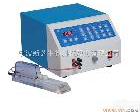Overview
Putting exosomes to work: Load your cargo directly into isolated exosomes
With Exo-Fect, you can turn isolated exosomes into cargo delivery vehicles that introduce RNAs, DNAs (including plasmids), and even small molecules into recipient cells. Simply combine isolated exosomes with Exo-Fect and your desired cargo, and in less than an hour your loaded exosomes will be ready to add to recipient cells.

- Easy-to-use with a fast and straightforward loading protocol
- Introduces a wide range of biomolecules directly into isolated exosomes:
- RNAs, including siRNAs, miRNAs, and mRNAs
- DNAs, including plasmids
- Metabolites and other small molecules
- Enables non-viral transduction and stable cell line creation
- Provides an alternative gene delivery method for hard-to-transfect cells
All Exo-Fect Kits come with a Texas Red-labeled positive control, non-targeting siRNA to confirm exosome transfections. Pair with our EV-Entry Reagent and maximize cargo uptake by recipient cells.
How It Works
Quickly and easily load cargo into isolated exosomes
Simply combine the isolated exosomes with Exo-Fect Reagent and cargo, perform two incubations for a total of 40 minutes, and then pellet your exosomes. The Kit comes with all of the reagents you need to load cargo into exosomes and concentrate them for delivery to target cells. The protocol takes less than an hour and is highly efficient at loading cargo into exosomes for transport and delivery.
Exo-Fect is also compatible with the EV-Entry Reagent, which maximizes cargo uptake by recipient cells.
Supporting Data
See how Exo-Fect can be used to create cargo-delivering exosomes
Exo-Fect efficiently loads small RNAs into exosomes for delivery to recipient cells

Figure 1. Exo-Fect efficiently loads siRNA into exosomes. Fluorescence imaging shows exosomes that were loaded with either a Texas Red end-labeled siRNA (left panels), or unlabeled siRNA (right panels) using Exo-Fect, and then immobilized onto Exo-FlowTM CD63 magnetic beads.

Figure 2. Exo-Fect transfected exosomes deliver siRNA cargo to recipient cells. The siRNA-loaded exosomes from Figure 1 were eluted from the Exo-Flow CD63 magnetic beads and then added to HEK293 cells. Fluorescence of the recipient cells indicates that the Texas Red-labeled siRNA cargo was successfully delivered.
Exo-Fect efficiently loads mRNAs and DNA plasmids into exosomes for delivery to recipient cells

Figure 3. Exo-Fect loaded exosomes deliver mRNA and plasmid DNA into recipient cells. ExoFect Kits also work with larger nucleic acids, like mRNAs and plasmids. (Left panels) We used Exo-Fect to transfect 1 µg of an mRNA encoding RFP into exosomes. These exosomes were then added to HEK293 cells and imaged for RFP protein production after 24 hours. (Right panels) We used Exo-Fect to transfect 5 µg of plasmid DNA encoding a GFP gene into exosomes, and then added the plasmid-loaded exosomes to HEK293 cells. The cells were imaged for GFP protein presence after 48 hours. The appearance of RFP signal (mRNA cargo) and GFP signal (plasmid cargo) in recipient cells indicates successful cargo delivery.
Exo-Fect efficiently loads small molecules into exosomes for delivery to recipient cells

Figure 4. Exo-Fect can even be used to transfect small molecules into exosomes. We loaded cumate into exosomes using Exo-Fect, and then added loaded exosomes to cells containing a cumate-inducible GFP reporter construct. Only cumate-containing exosomes were able to induce GFP expression in recipient cells, indicating successful delivery of cumate.
Citations
- Downs, CA, et al. (2017) Hydrogen peroxide stimulates exosomal cathepsin B regulation of the receptor for advanced glycation end-products (RAGE). J. Cell. Biochem.. 2017 Jun 15;. PM ID: 28618037
- Zhu, Z, et al. (2017) Macrophage-derived apoptotic bodies promote the proliferation of the recipient cells via shuttling microRNA-221/222. J. Leukoc. Biol.. 2017 Mar 8;. PM ID: 28274991
- Torri, A, et al. (2017) Extracellular MicroRNA Signature of Human Helper T Cell Subsets in Health and Autoimmunity. J. Biol. Chem.. 2017 Feb 17; 292(7):2903-2915. PM ID: 28077577
- Torri, A, et al. (2017) JBC Papers in Press. Published on January 11, 2017 as Manuscript M116. 769893. Journal of Biological chemistry. 2017 Jan 11;. Link: Journal of Biological chemistry
- Jella, KK, et al. (2016) Exosomal GAPDH from Proximal Tubule Cells Regulate ENaC Activity. PLoS ONE. 2016 Nov 1; 11(11):e0165763. PM ID: 27802315
- Srivastava, A, et al. (2016) Exploitation of Exosomes as Nanocarriers for Gene-, Chemo-, and Immune-Therapy of Cancer. J Biomed Nanotechnol. 2016 Jun 1; 12(6):1159-73. PM ID: 27319211
温馨提示:不可用于临床ZL。
 SBI,Exo-FectTM Exosome Transfection Kit核酸导入exsome
SBI,Exo-FectTM Exosome Transfection Kit核酸导入exsome
 SCIENTZ-2B基因导入仪\郑州基因导入仪\河南基因导入仪\基因导入仪价格\基因导入仪厂家
SCIENTZ-2B基因导入仪\郑州基因导入仪\河南基因导入仪\基因导入仪价格\基因导入仪厂家
 WJ-2005活体基因导入仪 \郑州基因导入仪\河南基因导入仪\基因导入仪价格\基因导入仪厂家
WJ-2005活体基因导入仪 \郑州基因导入仪\河南基因导入仪\基因导入仪价格\基因导入仪厂家
 F1-700细胞融合基因导入仪\郑州基因导入仪\河南基因导入仪\基因导入仪价格\基因导入仪厂家
F1-700细胞融合基因导入仪\郑州基因导入仪\河南基因导入仪\基因导入仪价格\基因导入仪厂家
 嵌式基因导入仪\郑州基因导入仪\河南基因导入仪\基因导入仪价格\基因导入仪厂家
嵌式基因导入仪\郑州基因导入仪\河南基因导入仪\基因导入仪价格\基因导入仪厂家
 中药离子导入仪/微电脑数码ZL仪/中药离子导入仪(4通道) 中药离子导入仪/微电脑数码ZL仪/中药离子导入仪(4通道)
中药离子导入仪/微电脑数码ZL仪/中药离子导入仪(4通道) 中药离子导入仪/微电脑数码ZL仪/中药离子导入仪(4通道)
 SCIENTZ-K96型细胞克隆观察仪 \郑州基因导入仪\河南基因导入仪\基因导入仪价格\基因导入仪厂家
SCIENTZ-K96型细胞克隆观察仪 \郑州基因导入仪\河南基因导入仪\基因导入仪价格\基因导入仪厂家
 SJ-500手提式基因枪\郑州基因导入仪\河南基因导入仪\基因导入仪价格\基因导入仪厂家
SJ-500手提式基因枪\郑州基因导入仪\河南基因导入仪\基因导入仪价格\基因导入仪厂家
 GJ-1000高压气体基因枪 \郑州基因导入仪\河南基因导入仪\基因导入仪价格\基因导入仪厂家
GJ-1000高压气体基因枪 \郑州基因导入仪\河南基因导入仪\基因导入仪价格\基因导入仪厂家
 智能活体基因导入仪,智能基因导入仪,活体基因导入仪
智能活体基因导入仪,智能基因导入仪,活体基因导入仪
 骨质增生药物电泳ZL仪/药物导入热疗仪/中药离子导入仪/低中频离子导入仪/骨质增生ZL仪(国产)2路输出(优势)
骨质增生药物电泳ZL仪/药物导入热疗仪/中药离子导入仪/低中频离子导入仪/骨质增生ZL仪(国产)2路输出(优势)
 活体基因导入仪 方波活体基因导入仪组织细胞活体基因导入仪
活体基因导入仪 方波活体基因导入仪组织细胞活体基因导入仪